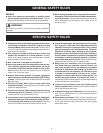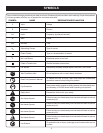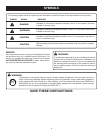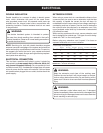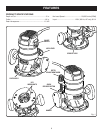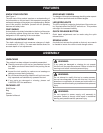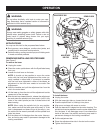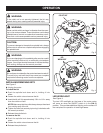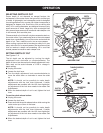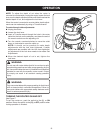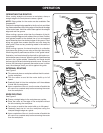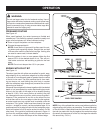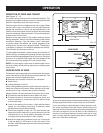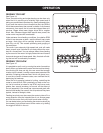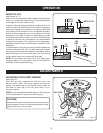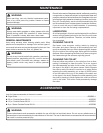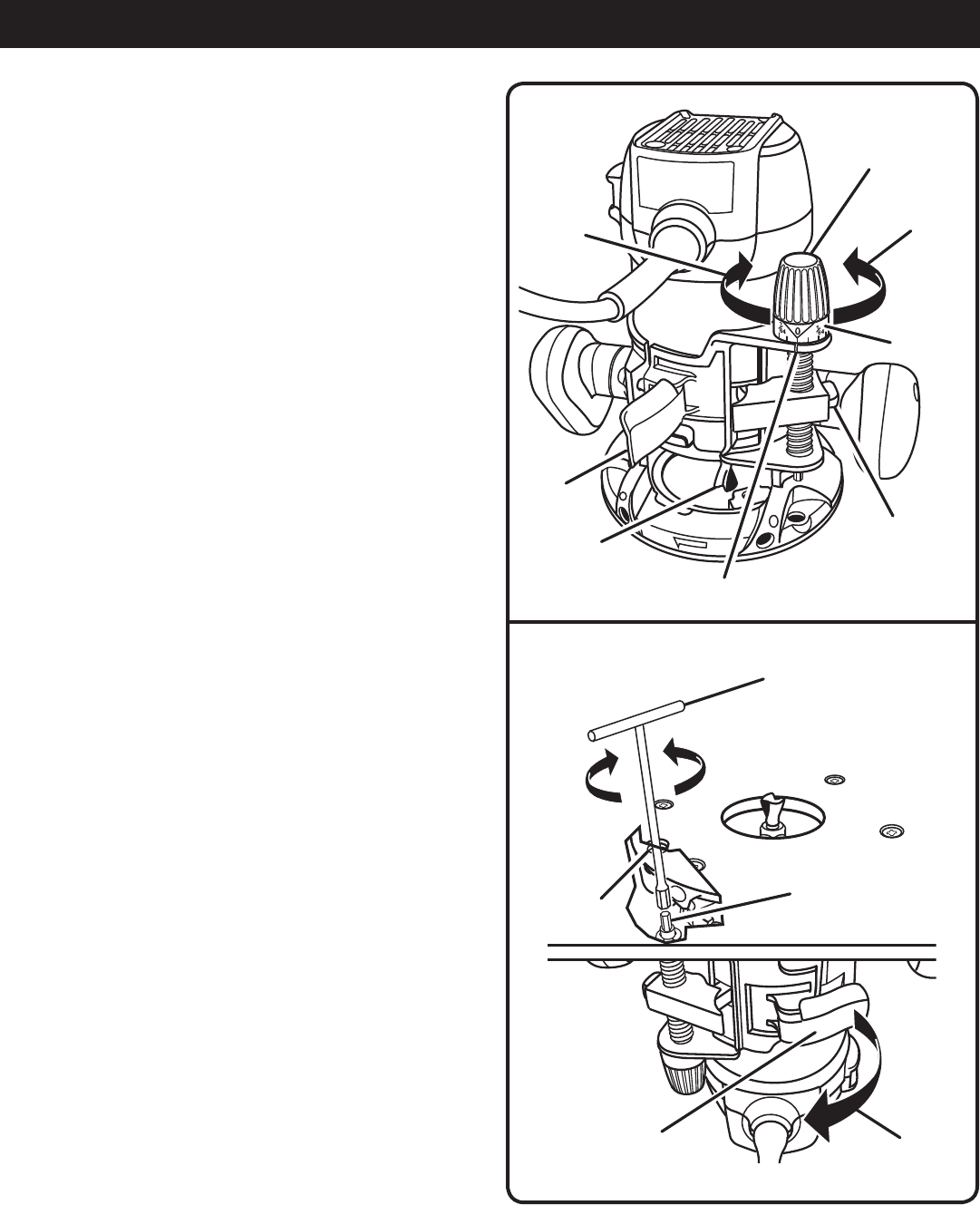
12
OPERATION
SELECTING DEPTH OF CUT
Proper depth of cut depends on several factors: the
horsepower of the router motor, the type of bit, and the type
of wood. A lightweight, low horsepower router is designed
for making shallow cuts; a router with higher horsepower is
designed for deeper cuts. Small bits, such as veining bits
with 1/16 in. cutting diameters, are designed to remove only
small amounts of wood. Large bits, such as straight-flute
bits, remove larger amounts of wood and make deeper cuts
in soft woods, such as white pine.
Choose a depth of cut that will not place excessive strain on
the router motor. If you need extra force or the motor speed
slows down considerably, turn off the router and reduce the
depth of cut. Then, make the cut in two or more passes.
When routing a groove that is too deep to safely cut in one
pass, make the cut in several passes. We recommend that
cuts be made at a depth not exceeding 1/8 in. and that
several passes be made to reach deeper cuts.
SETTING DEPTH OF CUT
See Figures 5 - 6.
The bit depth can be adjusted by turning the depth
adjustment knob clockwise or counterclockwise. The
depth of the cut can be read on the depth adjustment knob.
Each mark on the scale indicates a 1/128 in. change in
depth setting.
Unplug the router.
Loosen the lock lever.
Turn the depth adjustment knob counterclockwise to
move the collet down or clockwise to move the collet
up.
NOTE: It should not be possible to make depth
adjustments with the lock lever tightened. If depth
adjustments are possible with the lock lever tightened,
an adjustment to the lock lever needs to be made. See
Adjustments.
When the desired depth of cut is set, tighten the lock
lever.
To use the quick release button:
Unplug the router.
Loosen the lock lever.
Press and hold the quick release button while moving the
router motor up or down in the base.
NOTE: It should not be possible to make depth
adjustments with the lock lever tightened. If depth
adjustments are possible with the lock lever tightened,
an adjustment to the lock lever needs to be made. See
Adjustments.
When the desired depth of cut is set, tighten the lock
lever.
Fig. 6
Fig. 5
DEPTH
aDjuSTmENT
kNOb
TO
DECrEaSE
DEPTH
INDICaTOr POINT
bIT
SCaLE
TO
INCrEaSE
DEPTH
SLOT IN
SubbaSE
aDjuSTINg
NuT
T-HaNDLE WrENCH
TO
DECrEaSE
DEPTH
TO
INCrEaSE
DEPTH
TO
LOOSEN
quICk
rELEaSE buTTON
LOCk
LEvEr
LOCk LEvEr



